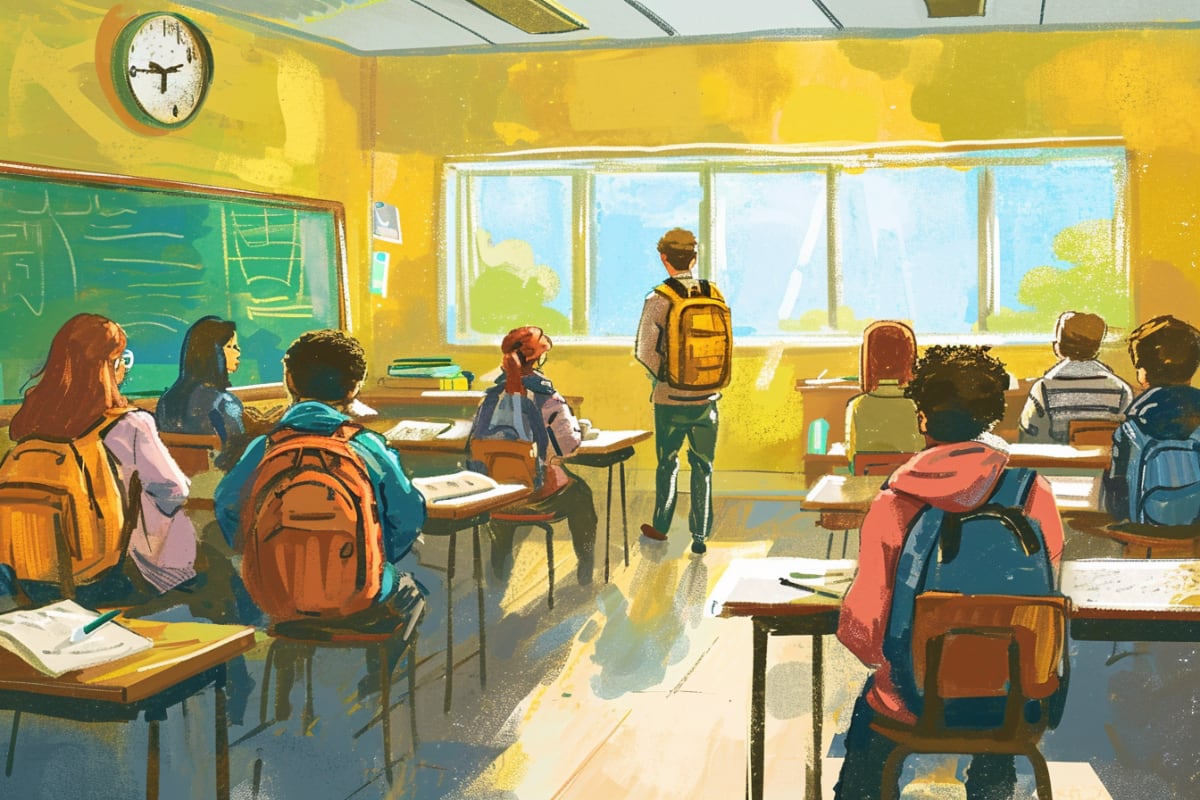As an educator, you know how important keeping students engaged in learning is. Engaged students are more likely to retain information, participate in class, and succeed academically. However, keeping students engaged in the classroom can be challenging with the rise of digital distractions and shortened attention spans. So, a teacher needs to understand how to improve student engagement.
1. Create a Positive Classroom Environment
Creating a positive environment in the classroom should be your top priority because it is one of the initial ways to enhance student engagement in the school. There are a lot of surveys where the students who feel comfortable and supported in class tend to perform much better than average students with less engagement.
To make your students participate in extracurricular activities in the classroom, you must make a better supportive and relaxed environment. You can create a better understanding classroom environment by:
- Greeting students at the door
- Learning students’ names and using them regularly
- Providing regular feedback and encouragement
- Celebrating student success
2. Use Active Learning Strategies
Active learning strategies require students to participate in the learning process actively. This type of learning is more engaging than passive learning, where students listen to lectures or read textbooks. Active learning has always shown its worth more than anything else. So as a teacher, it is always recommended to use active learning strategies more than anything. Some examples of active learning strategies are as follow:
- Group work
- Hands-on activities
- Debates
- Role-playing
- Case studies
3. Incorporate Technology
Today’s era is well known as a technological era, so it might be possible to engage students more in studies with the help of the latest technologies. Smart classes are the perfect example because students can learn complicated things because of visual effects more than books. Using technology should be the ideal approach for you as a teacher to get the most out of students in almost every activity in school. Some ways to incorporate technology include:
- Using educational apps
- Creating online quizzes
- Using interactive whiteboards
- Assigning online discussions
- Creating multimedia presentations
4. Vary Instructional Methods
Varying instructional methods keeps students engaged and prevents boredom. Boredom is one of the most common problems faced by many students during different activities in the classroom. It is one of the reasons why students need more engagement in school. Some students may respond better to visual aids, while others prefer hands-on activities. Using various instructional methods, you can reach all students in your classroom. Some instructional strategies to consider include:
- Lectures
- Group work
- Hands-on activities
- Discussions
- Multimedia presentations
5. Use Real-World Examples
One of the most effective tools to enhance students’ engagement in classroom activities is how a person can relate to things. If you use real-world examples for their better understanding, it will be a quick and practical approach. It is the people’s way by which they can relate them self in the activity or study properly. Some ways to use real-world examples include:
- Bringing in guest speakers
- Showing videos
- Using case studies
- Incorporating current events
6. Encourage Student Choice
Giving students a choice in their learning can increase engagement and motivation. When students have a good choice in their education, they are more likely to be engaged in the process with better concentration. Having something of their specific interest can be helpful to them in many ways. Some ways to incorporate student choice include:
- Allowing students to choose topics for research projects.
- Providing options for assignments
- Encouraging them to set better personal learning goals than ever.
7. Provide Regular Feedback
Feedback on their performance allows a student to know about their section, which needs instant improvement, and it is the best play to analyze their engagement in the classroom. Providing them with regular and accurate feedback about their project and classroom engagement might help them focus more on the weaker section next time. Some ways to provide regular feedback include:
- Using formative assessments
- Providing verbal feedback during class
- Using rubrics to grade assignments
- Using peer feedback
8. Build Relationships
Building a trustworthy and comfortable relationship with students might not be easy for every teacher. However, the efforts will be worthwhile because establishing a better relationship with students helps them engage better in the classroom. Some ways to build relationships include:
- Greeting students at the door
- Learning students’ names
- Having one-on-one conferences
- Providing opportunities for student voice and choice
- Celebrating student successes
9. Use Positive Reinforcement
Using positive reinforcement encourages positive behavior and increases engagement. When students receive praise for their efforts, they are likelier to continue engaging in class. So, answering “how to improve student engagement” is essential. Some ways to use positive reinforcement include:
- Providing verbal praise
- Giving stickers or other small rewards
- Celebrating student successes
- Providing rewards to praise them better than ever.
Conclusion
The most crucial approach for the teacher is to engage their students in the classroom with various activities. Student engagement is an important topic today. These are a few ways that can help you to achieve better overall engagement in the classroom. Start teaching with new methods now.
FAQs
1. Why is student engagement important?
Student engagement is essential because it can lead to better academic outcomes, higher student achievement, increased retention rates, and improved overall well-being.
2. How can teachers increase student engagement?
Teachers can increase student engagement by incorporating student-centered learning activities, providing meaningful feedback, creating a positive classroom environment, and using technology to enhance learning experiences.
3. What are some examples of student-centered learning activities?
Student-centered learning activities include project-based, inquiry-based, problem-based, and collaborative learning.
4. How can technology be used to enhance student engagement?
Technology can enhance student engagement by providing interactive and multimedia learning experiences, creating opportunities for collaboration and communication, and allowing for personalized learning.
5. Do teaching methods need to be updated?
Implementing new teaching methods is a good idea to change your approach when old ways don’t work properly. New teaching methods often include technology, with is a good idea to enhance engagement.





